Explore Comprehensive Rabbit Disease Management: Proven Strategies for 100% Effective Control and Treatment. Covering Rabbit Nutrition, Housing, Viral and Bacterial Infections, Parasites, Fungal Diseases, Digestive Disorders, Dental and Respiratory Care, Skin and Neurological Disorders, Urogenital and Orthopedic Care.
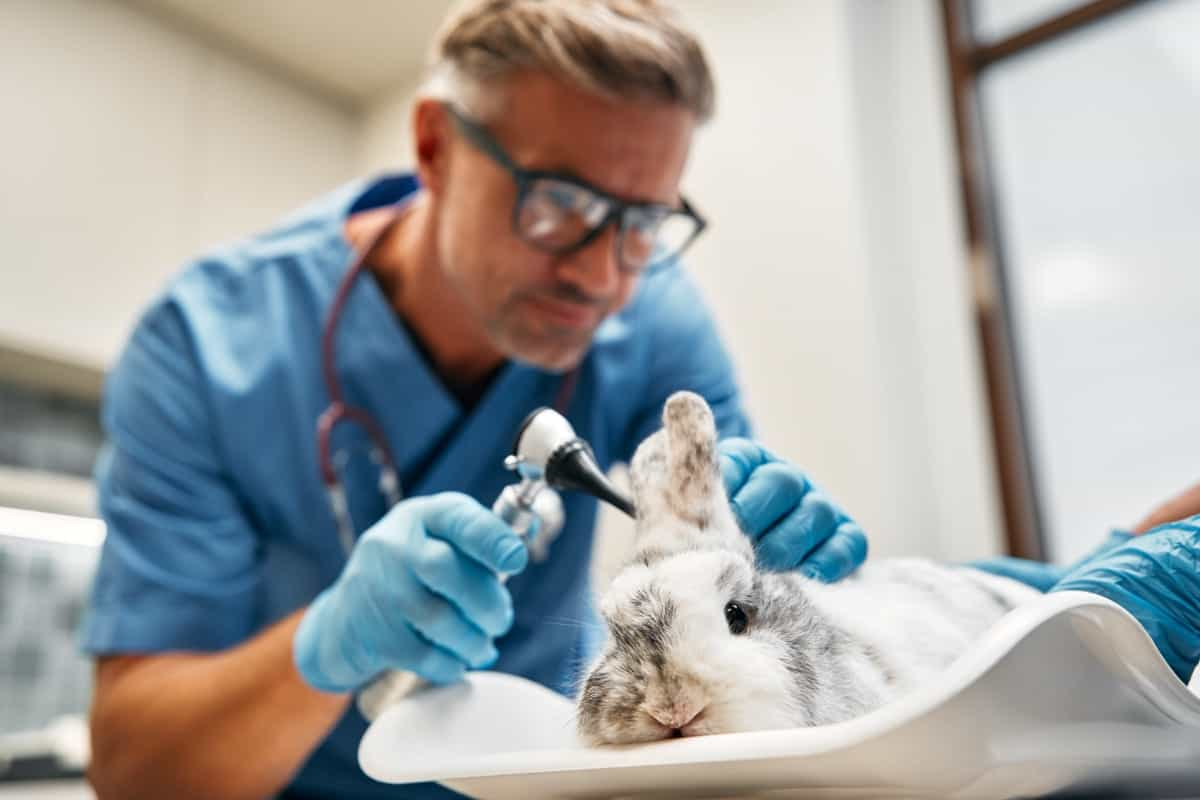
Learn Rabbit Emergency Care to ensure holistic well-being. This blog provides vital insights into maintaining optimal rabbit health, offering a go-to resource for rabbit enthusiasts, breeders, and pet owners seeking reliable information on preventing, treating, and managing various diseases.
Rabbit Disease Management
Preventing Rabbit Diseases
Preventing rabbit diseases is paramount for their well-being. Maintain a clean, well-ventilated housing to prevent stress and infections, ensuring spaciousness and avoiding overcrowding. Provide a balanced diet with fresh water, hay, and limited pellets to meet nutritional needs while avoiding sudden dietary changes. Shield rabbits from potential disease vectors like wild animals, rodents, and insects using fencing or cages.
Implement quarantine for new or sick rabbits, isolate them until proven healthy, and promptly consult a veterinarian for any signs of illness or injury. Vaccination against common viral diseases, like myxomatosis and rabbit hemorrhagic disease, is crucial. Collaborate with your veterinarian for suitable vaccinations. Regularly monitor rabbits for signs of disease, including changes in weight, lethargy, appetite loss, diarrhea, respiratory symptoms, or abnormal behavior.
Diet and Nutrition for Disease Prevention
A healthy, balanced diet for rabbit care. Rabbits should primarily consume hay and fresh grass, which are rich in fiber and essential for their digestive health. They also need a small amount of fresh vegetables daily, such as leafy greens, carrots, and herbs, which provide vitamins, minerals, and antioxidants. Clean water should be available at all times, preferably in a bowl.
In case you missed it: How to Start Rabbit Farming in Mexico: Key Rules, Business Plan, Requirements, Setup Cost, and Profit
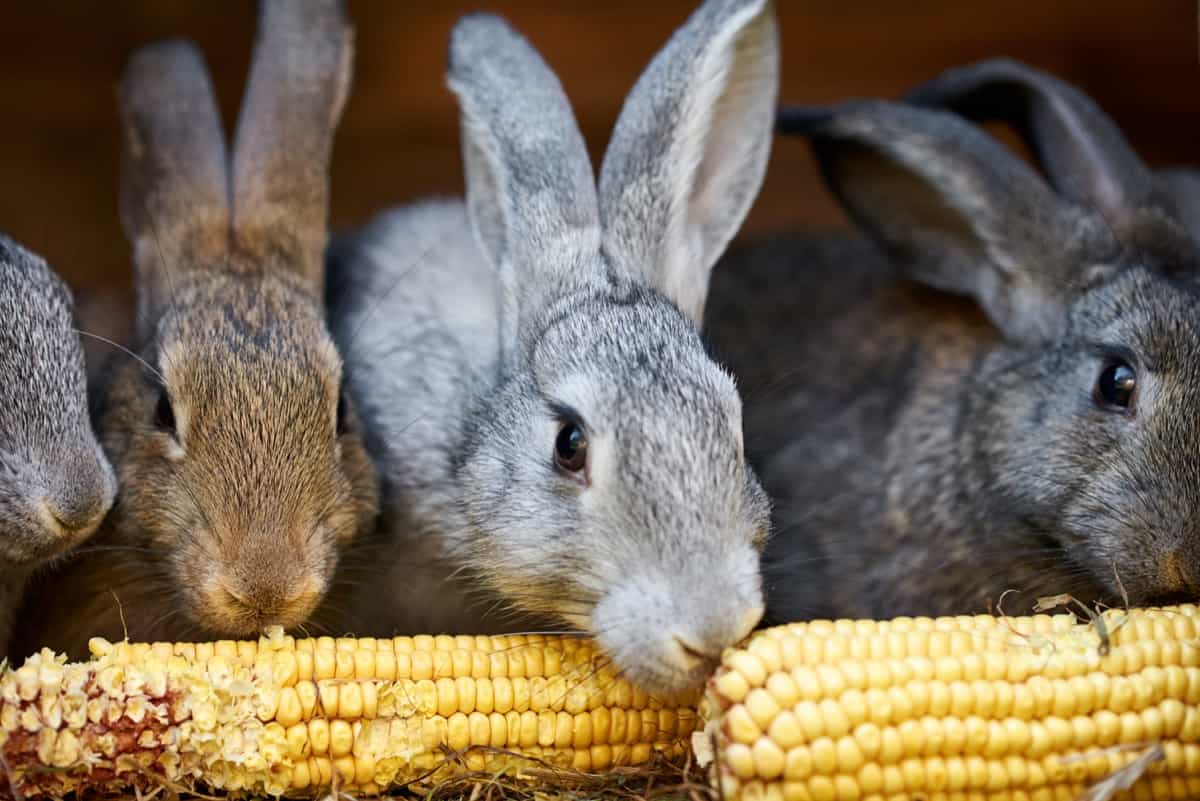
Rabbits should avoid high-calorie foods like fruits, cereals, bread, nuts, seeds, or dairy products, which can cause obesity, dental problems, and gastrointestinal disorders. Commercial pellets or treats are also not recommended as they are low in fiber and high in calories. A healthy diet can prevent common diseases like dental disease, obesity, gastrointestinal stasis, urinary tract infections, kidney stones, and liver disease and improve their mood, behavior, and quality of life.
Housing and Environmental Management
Rabbits require a spacious and comfortable enclosure that meets their physical and behavioral needs. The minimum size for a single rabbit is 12 square feet (1.1 square meters), but larger is always better. For multiple rabbits, more space is needed. The enclosure should have a solid floor covered with bedding, such as hay, straw, or shredded paper, providing cushioning, insulation, and nesting material.
Regular cleaning and replacement of bedding are essential. A litter box filled with paper-based or wood-based litter is also essential for hygiene and odor reduction. Enrichment items like toys, tunnels, hideouts, platforms, chew items, and foraging materials enrich the environment and stimulate natural behaviors.
These items provide mental stimulation, physical exercise, exploration, and play while preventing boredom, stress, and destructive behaviors. A rabbit’s enclosure should be placed in a safe, quiet area away from sunlight, drafts, heat sources, loud noises, predators, and other pets. Rabbits are sensitive to temperature changes and prefer a calm environment that doesn’t stress them out or disrupt their sleep cycle.
Common Viral Diseases in Rabbits
Myxomatosis is a deadly disease in domesticated rabbits caused by myxoma virus, poxvirus group. It causes mucinous skin lesions or edema of the head and other parts of the body. Wild rabbits, such as cottontails and jackrabbits, are resistant to the virus but can transmit it to domesticated rabbits through mosquitoes, fleas, biting flies, or direct contact. Myxomatosis is a severe conjunctivitis that rapidly worsens, causing listlessness, anorecticness, and fever.
In acute outbreaks, some rabbits may die within 48 hours. Those that survive develop a rough coat, edematous eyelids, nose, lips, and ears, and a swollen head. In females, the vulva becomes inflamed, while males swell. A purulent nasal discharge and labored breathing can occur, and rabbits may go into a coma just before death. Occasionally, fibrotic nodules may appear on the nose, ears, and forefeet. Rabbit fibroma virus causes benign skin tumors in domesticated and wild rabbits, which can interfere with vision, breathing, eating, or movement.
Bacterial Infections
Bacterial infections common cause of illness and death in rabbits, affecting various parts of the body, such as the respiratory system, skin, reproductive organs, ears, and eyes. Common bacteria infecting rabbits include Pasteurella multocida, Staphylococcus aureus, Streptococcus spp., Pseudomonas aeruginosa, Bordetella bronchiseptica, and Listeria monocytogenes.
In case you missed it: Key Rules to Improve Feed Conversion Ratio (FCR) in Rabbits: For Profitable Rabbit Farming
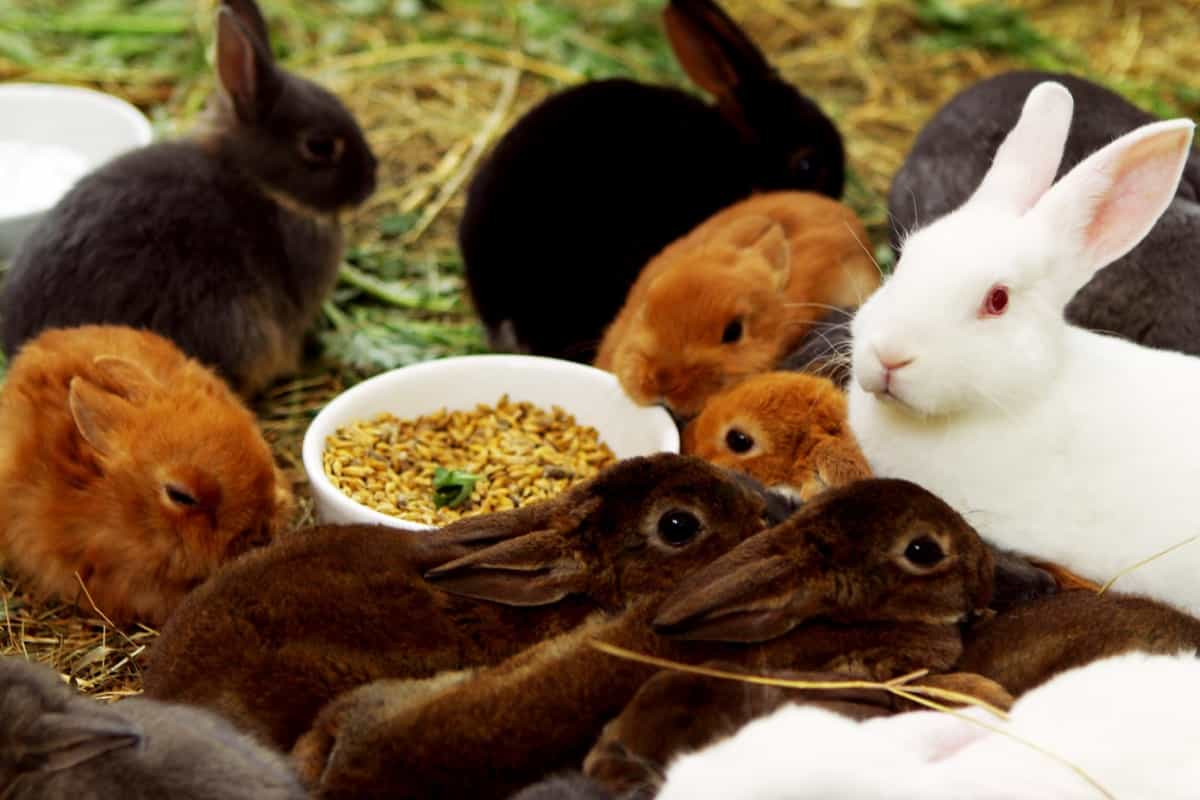
Symptoms include fever, lethargy, loss of appetite, weight loss, dehydration, discharge from the nose, eyes, or ears, sneezing, coughing, difficulty breathing, abscesses, skin lesions, hair loss, itching, redness, swelling, pain, lameness, head tilt, loss of balance, seizures, and death.
Causes of bacterial infections in rabbits include poor hygiene, overcrowding, stress, weak immune system, trauma, wounds, bites, scratches, foreign bodies, dental problems, and parasites. Treatment depends on the type and extent of the infection, and common treatments include antibiotics, fluid therapy, pain relief, anti-inflammatory drugs, surgery, wound cleaning and dressing, eye drops or ointments, and ear drops or ointments.
Prevention of Bacterial Infections in Rabbits
- Maintaining good hygiene and sanitation.
- Providing adequate space and ventilation.
- Reducing stress.
- Feeding a balanced diet.
- Providing fresh water.
- Grooming regularly.
- Checking for signs of illness or injury.
- Seeking veterinary attention promptly.
Parasitic Problems
Ear mites are a common parasitic issue affecting rabbits, causing irritation, inflammation, and crusty discharge. They can spread to other parts of the body, such as the face, neck, and feet. Diagnosis can be done through an otoscope examination or ear wax samples. To prevent ear mites, keep rabbits’ ears clean and dry, avoid contact with infected rabbits, and use topical medications like ivermectin or selamectin to kill the mites and prevent re-infestation.
Regular cleaning of the rabbit’s cage and bedding is also essential. Coccidiosis is another common parasitic problem affecting rabbits, causing diarrhea, weight loss, dehydration, and death in severe cases. Diagnosis can be done by examining feces for eggs or performing a blood test. Prevention involves:
- Keeping rabbits’ environment clean and dry.
- Avoiding overcrowding.
- Using coccidiostats like sulfadimethoxine or amprolium to prevent or treat the infection.
- Isolating infected rabbits and disinfecting cages and equipment are also essential steps.
Fungal Diseases
Ringworm is a common fungal disease that affects rabbits, causing circular patches of hair loss, scaling, and redness on the head, ears, feet, or body. Spread to humans, other animals through contact or contaminated objects. To prevent ringworm, keep rabbits’ skin healthy and clean, avoid contact with infected animals or objects, and use antifungal medications like griseofulvin or ketoconazole orally for several weeks or months. Clip affected hair and apply a topical antifungal cream or lotion to the lesions.
Dermatophytosis is another fungal disease that affects nails and footpads, causing thickening, cracking, and deformation, leading to pain, lameness, and secondary bacterial infections. Diagnosis can be done by examining nails under a microscope or culturing a sample of nail tissue. To prevent dermatophytosis, trim rabbits’ nails, keep footpads clean, dry, avoid contact with infected animals or objects, and use antifungal medications like itraconazole or terbinafine orally for several weeks or months.
Digestive Disorders
Digestive disorders like Gastrointestinal Stasis (GI stasis) and Enteritis pose significant threats to rabbits. GI stasis, often caused by stress, pain, dehydration, dental issues, or hairball obstruction, can lead to appetite loss, bloating, and even death. Prevention involves a high-fiber diet, abundant fresh water, and regular exercise. Probiotic supplements like Bene-Bac maintain gut bacteria balance. Treatment includes fluids, pain relievers, and motility enhancers, along with syringe-feeding high-fiber recovery foods.
In case you missed it: How to Start Rabbit Farming in Australia: Key Rules, Business Plan, Breeds, Cost and Profit
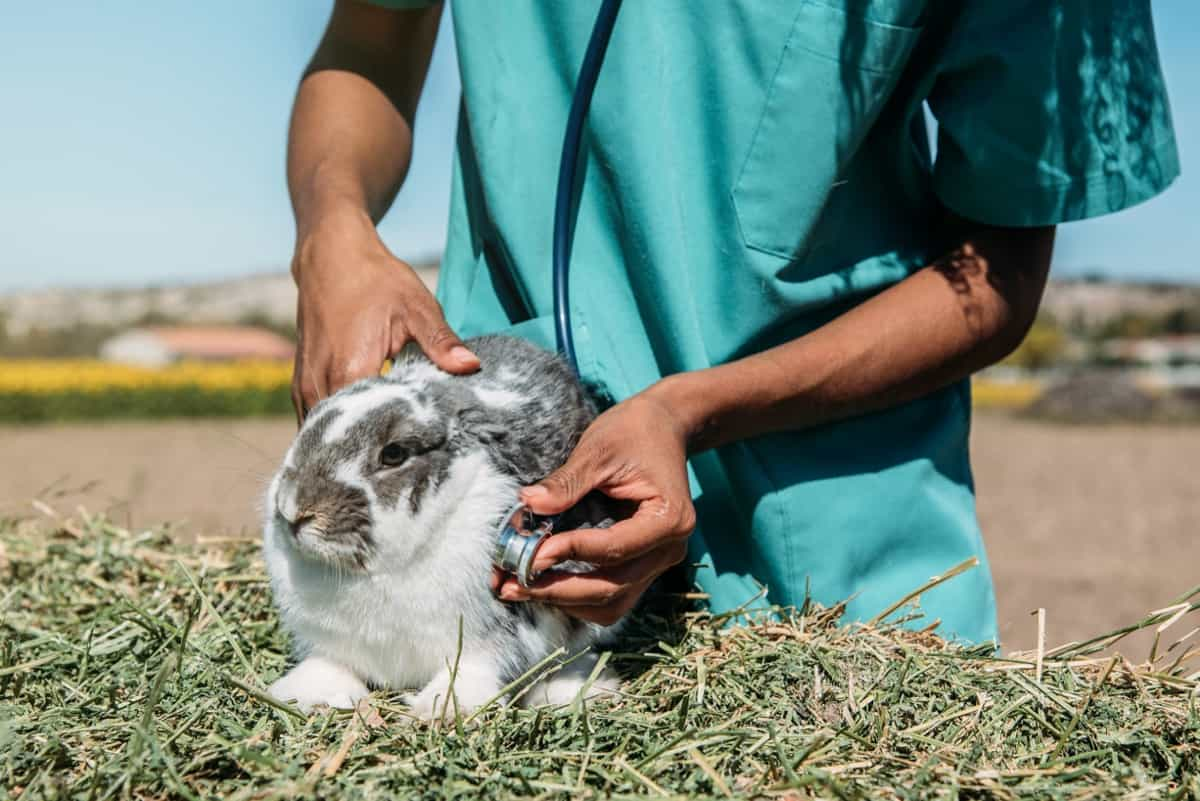
Enteritis, inflammation of the intestinal lining, arises from infections, dietary changes, stress, or toxins, causing diarrhea, dehydration, and weight loss. Prevention entails a balanced diet, stable food/water sources, clean environments, and preventive medications. Treatment involves addressing the root cause, administering fluids, antibiotics, and syringe-feeding recovery foods. Isolation of infected rabbits and thorough cage disinfection are crucial.
Dental Health Issues
Malocclusion is a common dental health issue in rabbits, causing teeth not to align properly and grow continuously. Genetic factors, trauma, infection, or poor diet can cause it. It can lead to issues like eating difficulties, weight loss, eye problems, abscesses, and infections. Diagnosis involves examining the mouth for signs of overgrown teeth, misalignment, or damage. To prevent malocclusion, rabbits should be fed a high-fiber diet, including fresh hay, leafy greens, and limited pellets. Wooden toys or blocks can also help wear down teeth. Treatment involves:
- Trimming overgrown teeth regularly.
- Using dental burrs or clippers.
- Treating infections or abscesses with antibiotics like penicillin or metronidazole.
Respiratory Conditions
Snuffles, a common respiratory condition affecting rabbits, are caused by bacteria and can cause sneezing, nasal discharge, conjunctivitis, and pneumonia. It is highly spreading through direct contact or aerosols. Diagnosis can be done by examining nasal discharge or performing a nasal swab culture. To prevent snuffles, keep the rabbits’ environment clean and well-ventilated, avoid contact with infected animals or objects, and use a Pasteurella Multocida Bacterin vaccine every six months.
Treatment involves antibiotics like tetracycline or enrofloxacin to kill bacteria and reduce symptoms. Clean the rabbits’ noses and eyes with saline solution or warm water to remove discharge and crusts. Myxomatosis is a viral infection causing swelling of the eyes, nose, ears, genitals, and skin lesions. It is fatal and has no specific treatment. Mosquitoes, fleas, mites, or direct contact with infected animals can transmit it.
Skin and Coat Conditions
Rabbits have sensitive skin and fur, requiring regular grooming and care. Common skin and coat conditions include ringworm-induced Dermatophytosis, a fungal infection causing hair loss, scaling, and redness, and cheyletiellosis, a mite infestation causing dandruff-like flakes, itching, hair loss, and redness.
Pododermatitis, a bacterial infection of footpads caused by staphylococcus, causes swelling, ulceration, bleeding, and pain. Treatments include antibiotics and wound care. Alopecia, a condition hair loss by stress, hormonal imbalance, and genetics, can also be treated. These conditions can be treated with antifungal drugs or topical creams.
Neurological Disorders
Neurological disorders in rabbits can cause symptoms such as seizures, head tilt, paralysis, loss of balance, or abnormal behavior. Common neurological disorders include Encephalitozoonosis, a parasitic infection caused by Encephalitozoon cuniculi, which can be transmitted through urine, feces, or contaminated food and water, and Pasteurellosis, a bacterial infection caused by Pasteurella multocida. The diagnosis by blood tests or urine tests, and treatment involves antiparasitic drugs for several weeks. The prognosis depends on the severity of the infection and the response to treatment.
Head trauma, caused by accidents, falls, or fights, cause bleeding, swelling, and damage to the brain or skull. Symptoms may include loss of consciousness, seizures, head tilt, or paralysis. The diagnosis by physical examination or x-rays, and treatment involves fluids, pain relievers, anti-inflammatory drugs, and antibiotics. The prognosis depends on the extent of the injury and the recovery of brain function.
Urogenital System Diseases
Rabbits’ urogenital system, which includes kidneys, bladder, ureters, urethra, and reproductive organs, can be affected by various diseases. Urinary tract infections are caused by bacteria entering the urinary tract, causing inflammation, pain, and difficulty urinating. Bladder stones, hard deposits in the bladder, can obstruct urine flow and cause symptoms like blood in urine, straining, and abdominal pain. These stones can be removed surgically or dissolved with medication or dietary changes.
In case you missed it: Livestock Vaccination Cost in India: Exploring Strategies to Reduce Animal Vaccination Costs
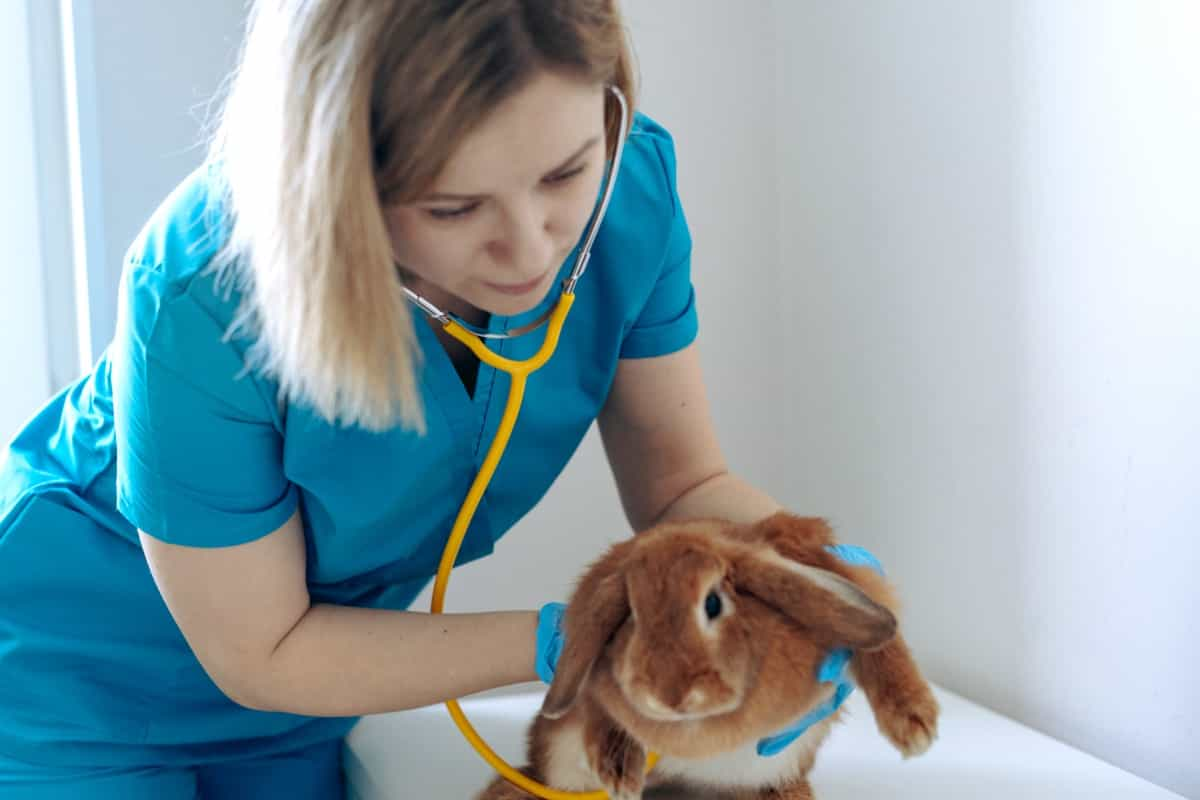
Pyometra, a serious uterine infection in female rabbits, is caused by bacteria entering the uterus through the cervix, causing pus accumulation, inflammation, and fever. Symptoms include vaginal discharge, lethargy, loss of appetite, and abdominal swelling. Pyometra can be life-threatening and requires immediate veterinary attention. Testicular cancer, a rare but possible condition in male rabbits, is caused by abnormal growth of cells in the testicles that can spread to other organs. It can be diagnosed by a veterinarian and treated by neutering the rabbit and removing the affected testicle(s).
Orthopedic Issues
Rabbits’ orthopedic system, consisting of bones, joints, muscles, tendons, and ligaments, supports their body and allows movement. Issues that can affect this system include arthritis, which causes inflammation and pain in joints, and fractures, breaksa and cracks in bones due to trauma or stress. Arthritis is more common in older or overweight rabbits and can be managed with pain relievers, anti-inflammatory drugs, supplements, weight control, and environmental modifications.
Fractures can be diagnosed using X-rays and treated with splints or casts until healing. Splay leg, a congenital condition causing weakness or paralysis of one or more limbs due to nerve damage or malformation, is more common in newborns or young rabbits and can be treated with physical therapy, massage, acupuncture, braces, or surgery, depending on the severity and cause.
Emergency Care for Rabbits
Rabbits are sensitive animals and can easily go into shock. To handle them, check their vital signs, such as breathing, heartbeat, temperature, and mucous membranes. If bleeding occurs, apply pressure on wound and seek veterinary attention if severe. Clear obstructions from the mouth or nose and stimulate breathing with gentle massage.
If the rabbit is unconscious or unresponsive, check for a pulse and perform CPR. If no pulse is found, give rescue breaths and continue CPR until a veterinarian arrives or the rabbit shows signs of life. If the rabbit is having seizures, do not restrain or handle it unless necessary, and keep it in a quiet, dark place away from triggers. Place a towel over the eyes and seek veterinary attention as soon as possible.
In case you missed it: A Guide to Understand Livestock Feeding: Check How this Guide Helps Livestock Farmers
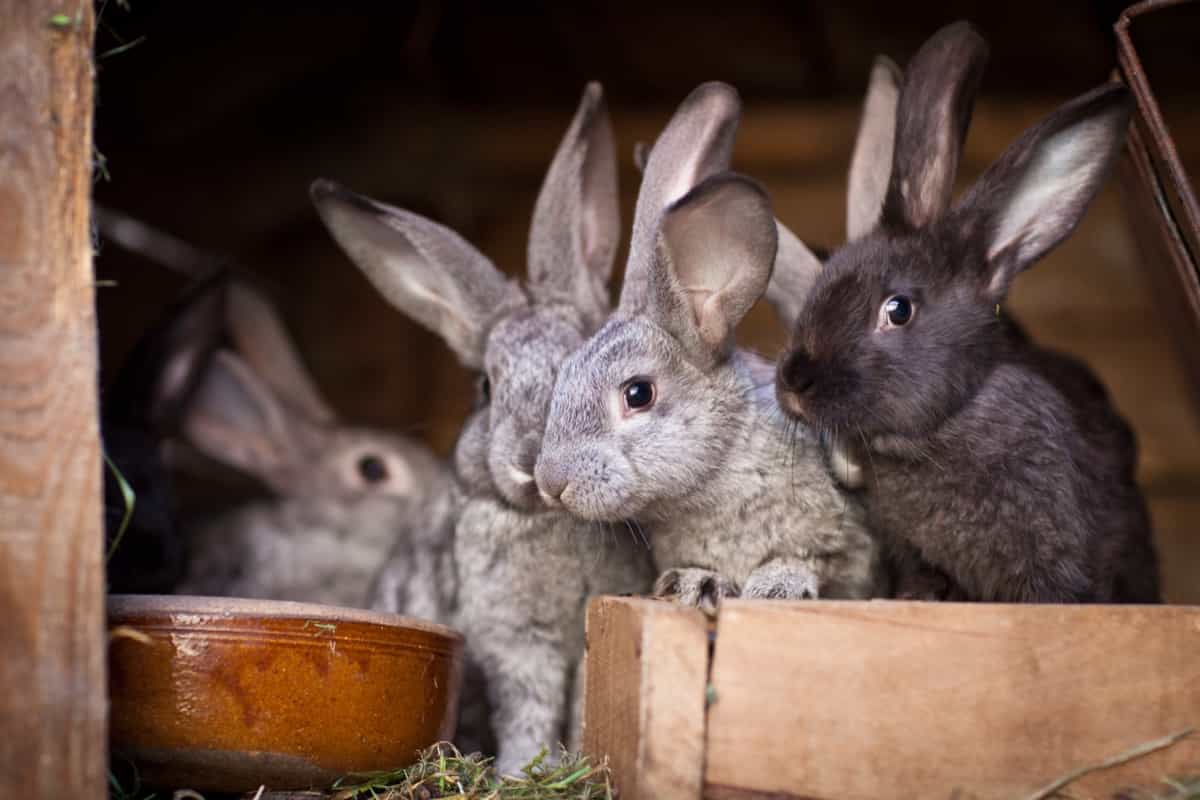
Conclusion
Mastering rabbit disease management involves a holistic approach. With 100% effective control and treatment strategies, emphasizing prevention, early detection, and swift intervention ensures the well-being of these furry companions, fostering a healthy and thriving rabbit community.
- Types of Pesticides Used in Agriculture: A Beginner’s Guide
- Economical Aquaculture: A Guide to Low-Budget Fish Farming
- 15 Common Planting Errors That Can Doom Your Fruit Trees
- How to Make Houseplants Bushy: Effective Tips and Ideas
- Innovative Strategies for Boosting Coconut Pollination and Yield
- Pollination Strategies for Maximum Pumpkin Yield
- The Complete Guide to Chicken Fattening: Strategies for Maximum Growth
- Natural Solutions for Tulip Problems: 100% Effective Remedies for Leaf and Bulb-Related Issues
- Revolutionizing Citrus Preservation: Towards a Healthier, Greener Future
- Natural Solutions for Peony Leaf and Flower Problems: 100% Effective Remedies
- Maximizing Profits with Avocado Contract Farming in India: A Comprehensive Guide
- Natural Solutions for Hydrangea Problems: 100% Effective Remedies for Leaf and Flowers
- The Ultimate Guide to Choosing the Perfect Foliage Friend: Bringing Life Indoors
- From Sunlight to Sustainability: 15 Ways to Use Solar Technology in Agriculture
- The Ultimate Guide to Dong Tao Chicken: Exploring from History to Raising
- The Eco-Friendly Makeover: How to Convert Your Unused Swimming Pool into a Fish Pond
- Mastering the Art of Delaware Chicken Farming: Essentials for Healthy Backyard Flocks
- 20 Best Homemade Fertilizers for Money Plant: DIY Recipes and Application Methods
- How to Craft a Comprehensive Free-Range Chicken Farming Business Plan
- Brighten Your Flock: Raising Easter Egger Chickens for Beauty and Bounty
- How to Optimize Your Poultry Egg Farm Business Plan with These Strategies
- Subsidy for Spirulina Cultivation: How Indian Government Schemes Encouraging Spirulina Farmers
- Ultimate Guide to Raising Dominique Chickens: Breeding, Feeding, Egg-Production, and Care
- Mastering the Art of Raising Jersey Giant Chickens: Care, Feeding, and More
- Ultimate Guide to Raising Legbar Chickens: Breeding, Farming Practices, Diet, Egg-Production
- How to Raise Welsummer Chickens: A Comprehensive Guide for Beginners
- How to Protect Indoor Plants in Winter: A Comprehensive Guide
- Ultimate Guide to Grow Bag Gardening: Tips, Tricks, and Planting Ideas for Urban Gardeners
- Guide to Lotus Cultivation: How to Propagate, Plant, Grow, Care, Cost, and Profit
- Agriculture Drone Subsidy Scheme: Government Kisan Subsidy, License, and How to Apply Online
- Ultimate Guide to Raising Araucana Chickens: Breed Profile, Farming Economics, Diet, and Care
- Bringing Hydroponics to Classroom: Importance, Benefits of Learning for School Students
- Ultimate Guide to Raising Polish Chickens: Breed Profile, Farming Economics, Diet, and Care
- Ultimate Guide to Raising Australorp Chickens: Profile, Farming Economics, Egg Production, Diet, and Care
- Silkie Chicken Farming: Raising Practices, Varieties, Egg Production, Diet, and Care
- Sussex Chicken Farming: Raising Practices, Varieties, Egg Production, Diet and Care